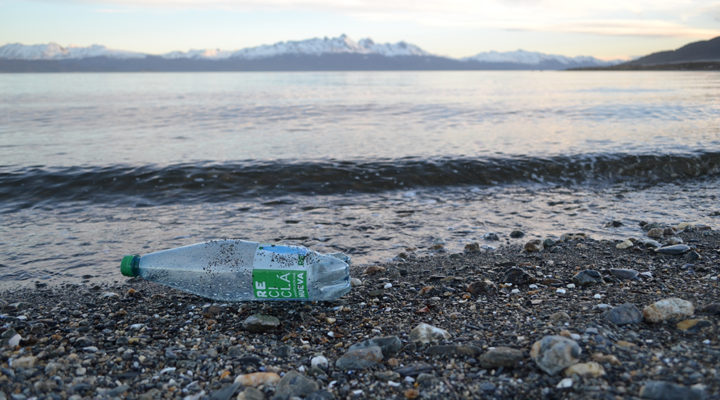Biological and Health Sciences
Microplastics: invisible threat of the seas
CONICET researchers define these materials and their effects on the beings that inhabit the seas.
Bottles, bags, containers, plastic wrap and packaging scattered are part of the current landscape of beaches, parks, mountains. Despite some isolated measures, the use of this material is very frequent in our culture, which also promotes disposable material. “Plastic is very used because it is cheap, light and easy to produce. However, it is highly resistant: a bag can take 600 years to degrade, or 1000 years in the case of a bottle” comments Ignacio Chiesa, CONICET researcher at the CADIC.
Besides, Analía Fernanda Pérez -CONICET associate researcher at the Maimonides University- adds: currently, only 9 per cent of the plastic produced is recycled. The UN has indicated that if this tendency continues and no measures are taken, in 2050 there will be 12 million tones of plastic waste distributed in landfills and the oceans, which means that there will be more plastic than fish in the seas.”
It is particularly worrying the indiscriminate entry of plastics into the marine environment, it is estimated that up to 10 per cent of those produced end up in the oceans, where they can persist and accumulate. For this reason, on this World Day of the Oceans, the UN sought to “highlight the problem of plastic pollution” and affirmed that “currently, 13 million tons of plastic seep into the ocean every year, which causes, among other damages, the death of 100,000 marine species.” Although the researchers state that it is difficult to provide a specific number of losses of species, they agree with the severity of the diagnoses.
Besides, plastic contamination in aquatic environments is particularly complex because of they way they degrade. The visible and palpable plastic waste, which floats and submerges, brings evident problems to the animals that ingest them, like fish, whales, turtles and sea lions- or they can even be caught between the nets. Apart from those troubles, the plastic waste progressively degrades and releases small particles known as microplastics, which measure less than 5 millimeters.
“The presence of small plastic fragments in the oceans was first noted in the seventies. They can be formed by the decomposition of macroplastics due to the effect of solar radiation, oxidation –the interaction with oxygen- and the mechanical forces- such as waves, wind and others-. They can also be incorporated directly into the water, like in the case of synthetic textile fibers, cosmetics, and tire wear, among others, Chiesa explains.
Although the existence of microplastics has been known for several decades, it was only in the last ten years that they started to be analyzed. Experts observed that the pollutants are present in all the seas of the world can cause damage to the species and communities that live in these ecosystems.
Due to their small size, micropastics are available and can be consumed by other organisms in the base of the food chain, that is to say those that are at the beginning of the food chain,” Pérez describes. “Besides, as a tiny particle, they have a large outer surface in relation to their volume. This makes microplastic concentrate pollutants a million times more than seawater. They can also absorb heavy metals and leave bioavailable plasticizers and toxic additives used during their production. Therefore, the intake of these particles can introduce toxins at the base of the food chain and accumulate in the organism over time –a process known as bioaccumulation – and also transfer to higher levels, that is, to their predators.” Chiesa adds.
Although in recent years the importance of the phenomena was reflected in an increase in research and publications on the interactions between the set of living beings of one ecosystem –biota– and the microplastics, in Argentina the records are still scarce and they are concentrated in the estuary of Río de la Plata.
The exception to the rule
A team that comprises Ignacio Chiesa and Analía Pérez –among others- conducts a study to monitor the presence of microplastics in Tierra del Fuego. The idea is to identify one or more indicator species that facilitate the biomonitoring of contaminant over time and in different areas. “Our preliminary results indicate the presence of microplastics in marine invertebrates like the macaw (Nacellamagallánica) and the mussel (Mytilus edulis chilensis), of the Beagle Channel, and in the Puyen fish (Galaxias maculates) of Arroyo Negro, National Park of Tierra del Fuego,” Pérez comments.
By Mariela López Cordero – CADIC
